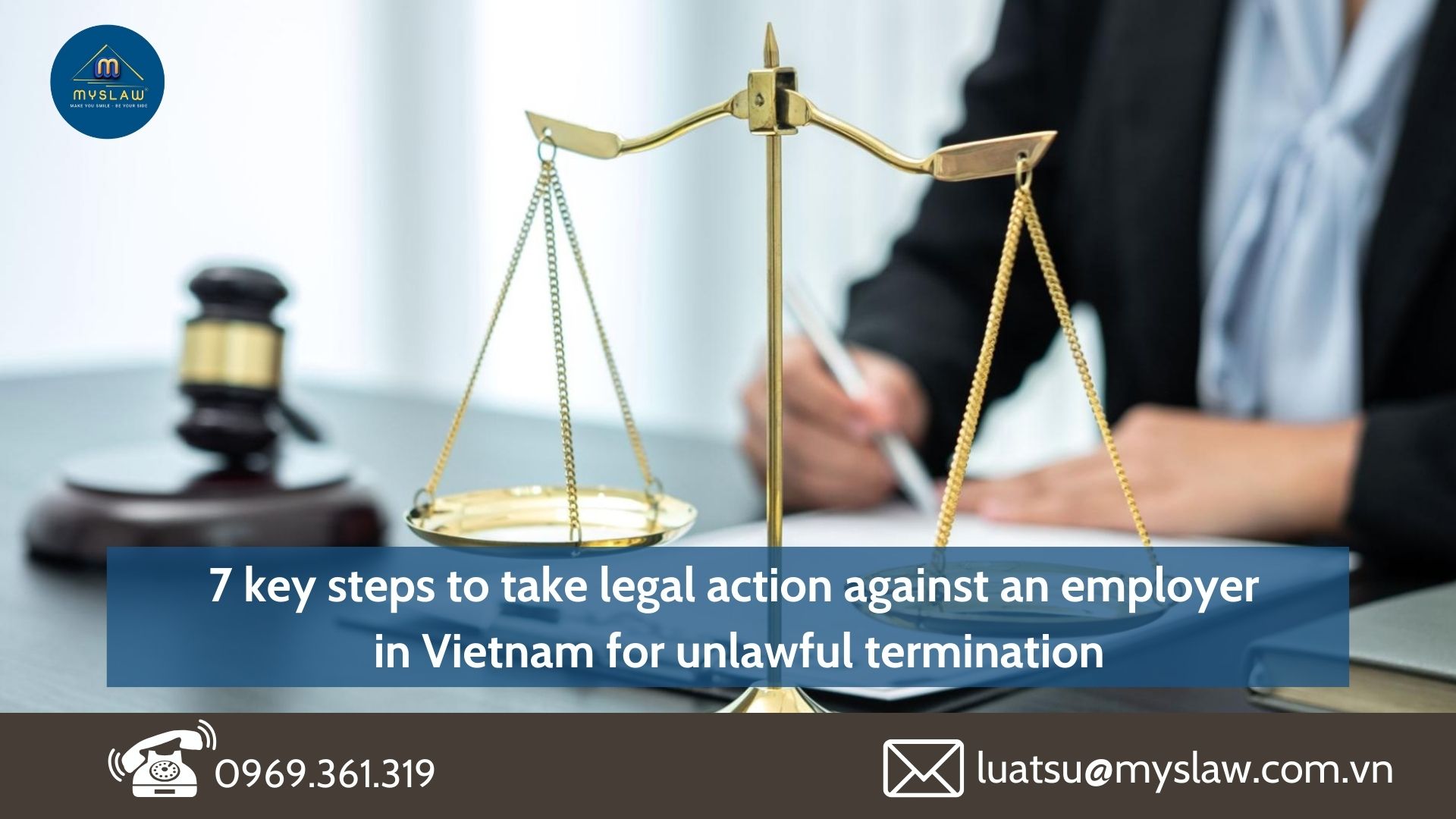Unlawful termination can leave you feeling a mix of anger, frustration, and uncertainty about your future. However, the best approach is to set aside these emotions and focus on the legal steps you can take to hold your employer accountable and secure justice. In Vietnam, labor laws provide employees with strong protections against unfair dismissal, yet many workers—particularly expatriates—are unaware of their rights or how to pursue them. This article outlines seven essential steps to help you take action against unlawful termination in Vietnam.

1. Understand What Constitutes Unlawful Termination
Before taking legal action, it’s crucial to determine whether your termination was unlawful under Vietnam’s Labor Code. Employers cannot arbitrarily dismiss employees without complying with legal requirements, such as:
- Providing a legitimate reason (e.g., poor performance, misconduct, or financial difficulties of the employer).
- Giving the required notice period (which varies depending on the employment contract and situation).
- Following procedural steps in line with Vietnamese labor law.
Common cases of unlawful termination include dismissals without notice, based on discrimination (e.g., age, gender, religion), or without valid reasons outlined in the Labor Code.
2. Confirm That Your Termination Was Unlawful
The first crucial step is to assess whether your dismissal violates any provisions under Vietnam’s labor laws. To do so, ask yourself the following questions:
- Did your employer provide a legitimate reason for your dismissal?
- Was the required notice period respected?
- Was the termination based on discriminatory practices (e.g., related to your age, gender, or religion)?
- Was the termination in retaliation for actions like whistleblowing or filing a complaint?
If any of these violations apply, you may have a strong case for pursuing legal action.
3. Gather Evidence to Build Your Case
To strengthen your legal claim, it’s essential to gather relevant evidence. Here are key pieces of documentation you should collect:
- A copy of your employment contract.
- Written communications from your employer (e.g., termination letters, emails, or messages).
- Witness statements from colleagues or others familiar with the circumstances leading to your termination.
- Performance reviews or employment records that contradict the employer’s reasons for dismissal.
Having this evidence ready will help build a compelling case as you move forward with legal action.
4. Consult with a Labor Lawyer in Vietnam
Engaging a qualified labor lawyer with experience in unlawful termination cases is critical to navigating Vietnam’s complex labor laws. A lawyer can:
- Evaluate the strength of your case.
- Help you collect and present evidence effectively.
- Represent you during negotiations with your employer.
- Assist with filing the lawsuit if mediation or negotiations fail.
When choosing a lawyer, ensure they specialize in labor disputes and unlawful termination cases. Communication is key, so working with a lawyer you feel comfortable with is crucial, as you will need to collaborate closely throughout the legal process.
5. Attempt Mediation with Your Employer
Before filing a lawsuit, Vietnam’s labor law requires an attempt at mediation. Mediation provides an opportunity to resolve the dispute amicably without entering a lengthy court process. Here’s how it works:
- Mediation sessions are overseen by a labor mediator from the local Department of Labor, Invalids, and Social Affairs (DOLISA).
- Both parties present their arguments, and the mediator attempts to facilitate a mutual agreement.
Mediation is faster and less costly than a formal lawsuit. However, if mediation fails or the employer refuses to cooperate, you can proceed with legal action.
6. File a Complaint with DOLISA
If mediation does not resolve the issue, the next step is to file a formal complaint with DOLISA. This is a critical step in the legal process to pursue justice for wrongful termination.
Steps for Filing a Complaint:
- Draft the Complaint: Prepare a concise complaint detailing your wrongful termination and include copies of relevant documents (e.g., labor contract, termination letter, evidence gathered).
- DOLISA Investigation: DOLISA will investigate your complaint by reviewing both sides of the dispute and may summon both parties for further mediation.
- Resolution: If DOLISA rules in your favor, they may order your employer to rectify the situation (e.g., reinstatement or compensation). If the issue remains unresolved, you may escalate the matter to court.
7. File a Lawsuit Against the Employer in Court
If mediation and DOLISA’s involvement fail to deliver satisfactory results, you can take your case to a labor court. Here’s how to prepare for legal proceedings:
- File the Lawsuit: Your lawyer will file the lawsuit with the Provincial People’s Court. The filing should include a detailed petition explaining the unlawful termination, the evidence supporting your claim, and the desired outcome (reinstatement, compensation, or both).
- Present Your Case: During the court proceedings, your lawyer will present your case, cross-examine the employer, and argue why the termination was unlawful.
If you are a foreigner, you do not need to be present in Vietnam to attend the hearings; your lawyer can represent you in court.
Court Timeline and Costs: The duration of a lawsuit can vary from several months to over a year, depending on the complexity of the case. Court fees in labor disputes are not based on the claimed amount, so the financial burden of pursuing a lawsuit is relatively low.
Outcome Possibilities:
- Compensation: If reinstatement is not feasible, the court may award compensation for lost wages, emotional distress, or other damages.
- Reinstatement: In some cases, the court may order your employer to reinstate you, potentially with back pay for the time you were unlawfully terminated.
Conclusion: Protecting Your Rights
Facing unlawful termination is undoubtedly stressful, but with the right preparation and legal support, you can hold your employer accountable and achieve a fair outcome. Vietnam’s labor laws are designed to protect employees from unjust treatment. By taking decisive action and following the outlined steps, you not only safeguard your rights but also set a precedent that can deter employers from engaging in similar unlawful practices in the future.
By understanding the legal framework, gathering evidence, consulting a lawyer, and going through the necessary steps, you can pursue justice for wrongful termination and achieve the compensation or reinstatement you deserve.
The above information is provided by Mys Law. For any questions regarding the content of this article, please contact 0969.361.319 or email: [email protected] for further clarification. Best regards!





